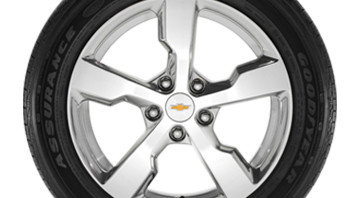Only about half of North American snow-belt drivers use winter tires, in spite of their superior performance in cold-weather conditions and proven road accident declines. Studies in Quebec, Canada, where snow tires are mandatory from Dec. 15 to March 15, show that injuries from accidents have fallen by 5-17 percent, and crashes causing serious injury or death are down 35 percent! That’s enough right there to search Heidebreicht’s tire inventory or call their service department: 866-471-2640 for information.
Additional reports from the Traffic Injury Research Foundation (TIRF) indicate that snow tires reduce costly collisions by providing superior traction, cornering and braking on all cold weather surfaces. A spokesman from the Rubber Association of Canada (RAC) states “All the evidence points to winter tires being the safest choice for driving in cold weather”. The Association makes pertinent information available on their website, www.rubberassociation.ca.
A Few Myths about Winter Tires
- Snow tires are only for areas with lots of snow. The truth is it’s as much about the temperature as the snow. When temperatures drop below 7 degrees, the rubber in all-season tires becomes inflexible, killing traction. Winter tires work better regardless of the road being dry, snow covered, slushy or icy. They feature rubber compounds that retain elasticity in temps below -22 degrees and treads that grip at cold temps. Overall, snow tires deliver up to 50 percent more weather traction than all-seasons.
- Summer or All-season tires deliver enough traction in winter. On the contrary, these tires take as much as 30 percent longer to stop than winter tires, on dry pavement at just below freezing temps. This can make the difference between life and death. They also have better traction in snow at -40 degrees. than all-seasons have at 39 degrees.
- Anti-lock braking systems, all-wheel drive or four-wheel drive give sufficient protection. Actually, all these systems require substantial traction to be effective and only winter tires can provide it. Four-wheel drives are for accelerating in snow, not braking.
- Two winter tires, rather than four, will do the job. This creates a traction imbalance between the front and rear wheel positions, causing a vehicle to ‘over steer’ or ‘under steer’, making the vehicle unsafe to control, especially when cornering.
- Winter tires don’t make a difference on black ice. Not true. Quality winter tires can stick to glare ice – if they are within their traction limits. When your car starts to slide, look down the road where you need to go and keep a light grip on the wheel.
The tires’ rubber begins gripping imperfections on the ice as you decelerate and you’ll regain control. Gentle control and slow speed maintains traction.
So be safe this winter, and consult with a Heidebreicht tire technician abut snow tires for your vehicle.
Source:http://www.rubberassociation.ca/files/Winter%20Tire%20Benefits%20Not%20Understood.pdf http://www.theglobeandmail.com/globe-drive/adventure/trends/14-reasons-to-ditch-your-all-season-tires-for-the-winter/article15295871/?page=all

